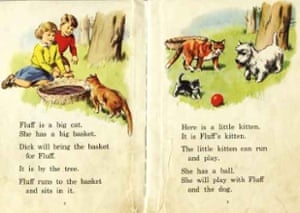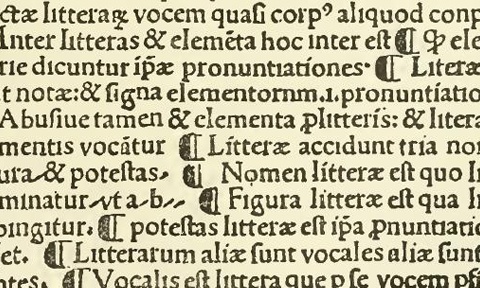If the statistics are to be believed, by the end of this sentence, I’ll have lost most of you. Because according to some estimates, the average time spent on a webpage is 15 seconds.
Fifteen seconds. This texty, Tweety, Viney world has apparently already so degraded our attention spans that we can’t concentrate on anything for longer than it takes to tie a shoelace. As a result, the editor’s greatest fear these days is not a claim of plagiarism, or a libel writ; it’s those four pitiless letters in the comments section: TL; DR (too long; did not read). And so webmasters worldwide have launched an emergency austerity programme, pruning, paring, compacting everything possible in a frantic attempt to spare our readers a few precious seconds.
Most online gurus caution against blogposts of more than 600 words; some insist that the ideal length is 200. Internet users, they cry, can’t be bothered to scroll through long articles. Last year, the bosses at Associated Press circulated a memostipulating that stories be between 300 and 500 words long (exceptions can be made – up to a whopping 700 words – for events of global importance). At the same time, the UK government’s website, gov.uk, promised that it would never publish a sentence exceeding 25 words.
This fragmentation of information isn’t confined to the internet. In 1992, a professor at the University of California published research showing that the length of the average political soundbite on American TV had dropped from 43 seconds in the 1968 presidential election to nine seconds in 1988. (It now stands at just under eight seconds.)
The most obvious casualty of this economy drive is the venerable paragraph. Below are excerpts from recent news stories on the Guardian website (before I got my hands on them):
The CPS admitted it made mistakes and that Janner should have been prosecuted earlier.
‘In relation to the other three previous investigations, the CPS also now considers that the evidential test was passed.
‘It follows that mistakes were made in the decision making at the time by both the Leicestershire police in 2002 and the CPS in 1991 and 2007.
‘Lord Janner should have been prosecuted.’ ”
Parts of Britain are set to enjoy sunny spells this week with temperatures expected to rise to 23C (73F).
The south-east of England could bask in the warm temperatures, which are well above the average for May, on Monday, forecasters have predicted.
However, the good weather is not set to last, with unstable conditions arriving across much of the country from Wednesday.”
Of course, different rules apply in different media. Paragraphs in newspapers have always been shorter than in novels and essays, chiefly because their pages are split into columns. With narrower margins, more frequent indentations are required to break up the daunting blocks of text. Furthermore, news stories – in some papers, at least – are supposed to be light on opinion, speculation and excessive description, restricting themselves to the facts and perhaps a little context and reaction, so there’s less scope for discursion.
The internet, meanwhile, has exerted further downward pressure on paragraph length. Reading on a laptop screen or phone is slower and more fatiguing, and it’s harder to keep your place; inserting regular, clear breaks (complete lines rather than indentations) is one way to create a smoother reading experience.
None of this is in dispute. But consider this recent piece on the BBC website. With two exceptions, all the paragraphs in this story consist of precisely one sentence. When I came across that story, the layout seemed dimly familiar. Then it hit me:

Now, great swaths of text put me off as much as the next person. But if things continue in this vein, before long the paragraph will go the same way as the harpsichord, the fob watch and the returned phone call.
An entirely legitimate response to this development, of course, is an imperceptible shrug. So what if it dies? What has it ever done for me? But before we write the paragraph’s epitaph, I propose we briefly examine its career and achievements, and establish whether it is, in fact, worth keeping the life support switched on.
The history of the paragraph is long, messy and, for the greater part, teeth-grindingly dull. So here are some edited highlights.
The pilcrow’s progress
- Although the paragraph as we know it today only took shape about 400 years ago, text has been broken into sections since at least the 3rd century BC. Instead of using indenting or spacing, the ancient Greeks used symbols in the margin (hence paragraphos, “written at the side”), such as horizontal strokes, wedges and hooks, to signal a change of speaker, topic or scene.

- Paragraphos was corrupted, via Old French and Middle English, into pilcrow, which has since come to mean the typographical character that represents a paragraph (left). The original Greek word was later reappropriated to mean the block of text so denoted.
- In the early days of movable type, some printers tried to preserve the manuscript traditions of illumination (ornate decoration) and rubrication (the addition of headings, usually in red). The typesetter would therefore leave spaces throughout a printed book, and rubricators, or “rubrishers” – it is my fervent hope that at least one of them was called Alan – would fill them in by hand. The trouble was, this small, elite band couldn’t keep up with the volume of books being produced, and so many of the spaces ended up being left blank. Thus, according to one theory, was born indentation.
- EH Lewis, in his History of the English Paragraph (1894), claims that the first “tolerable paragrapher” in English was William Tyndale, the Bible translator who was executed in 1536. But it was the linguist Alexander Bain, in 1866, in Lewis’s view, who first suggested that paragraphs should be organised according to “individual units of thought”.
- The pilcrow symbol itself probably evolved from the small letter C, for the Latincapitulum, “small head[ing], chapter”, along with two vertical lines, which may have originated as a note from the scribe to the rubrisher meaning “full height”.
- The length of paragraphs in essays and novels from the 15th century to the turn of the 20th varied hugely, of course, but the average remained more or less constant at about 300 words. During that time, however, the average length of asentence dropped by half, while the average number of sentences per paragraph, as if to compensate, doubled.
Fascinating as all this is, there’s not a huge amount to support the paragraph’s mercy plea. What, then, do the grammar gurus say on the subject?
Plenty, as it turns out – but it’s hard to find even two who are in complete agreement: “a distinct passage or section of a text, usually composed of several sentences, dealing with a particular point, a short episode in a narrative, a single piece of direct speech, etc” (OED); “a connected series of sentences constituting the development of a single topic” (GF Genung); “a unit of written discourse between the sentence and the whole text … to show the reader that the sentences in a particular set are more closely related to each other than to the sentences in adjacent text” (David Crystal). Chomsky is one of many linguists who don’t even recognise the paragraph as a legitimate syntactical unit.
Not surprisingly, then, the answers to the question “How long should a paragraph be?” are as varied as those to “How long is a piece of string?”: “The term paragraph can hardly be applied to anything short of three sentences” (John Earle); no more than five or six sentences (Grammarly); “The ideal paragraph contains five sentences” (Arthur F McEvoy); less than five sentences (copyblogger.com); “No arbitrary rules can be given as to the proper length of paragraphs … it is not well to extend a single paragraph beyond three hundred words” (Scott and Denney). The dependably thorough Grammar Girl cites various authorities as recommending 100-200 words – although the average number of words per paragraph in the selfsame blogpost is 58.
What, then, is to stop us abandoning the paragraph altogether and simply breaking after every sentence? Well, several things.
Paragraphs allow us to group gobbets of information together in (more or less) coherent units. A long paragraph can be a reasoned, nuanced discourse. Lots of short paragraphs create the impression of a series of unconnected slogans, with no obvious progression.
Paragraphs also allow for variation of rhythm; as Grammar Girl says, “It’s important to mix up your paragraph length for the same reason you mix up your sentence structure: to keep your reader’s eyes from glazing over.” It’s all very well not deterring the reader with huge blocks of text, but after winning their attention, you ideally want to keep it.
But to my mind, one reason, and one reason alone, is sufficient to justify the Save the Paragraph Campaign. Time was, when you came across a paragraph of one sentence, you knew it contained powerful stuff (in the writer’s view, at least). A short paragraph, coming after many long ones, could deliver a real punch. Imagine how much less impressive the closing line of The Great Gatsby would be if every preceding paragraph had also been one sentence long:
So we beat on, boats against the current, borne back ceaselessly into the past.”
Perhaps the string analogy is a useful one. After all, the whole point of a piece of string is that it can be as long as you want it to be: if string came ready cut in 2cm segments, it wouldn’t be any use at all.
Follow Andy on Twitter at @AndyBodle
